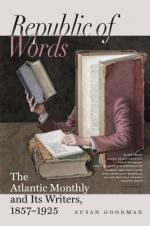There can be no more valuable lesson in Art given than that series of Turner drawings in the British collection, both as concerns its progression in the individual and those subtile analogies between painting (color) and music,—analogies often hinted at, but never, that we are aware, fully followed out. Color bears the same relation to form that sound does to language. If a painter sit down before Nature and accurately match all her tints, we have an absolute but prosaic rendering of her; and the analogy to this in music would be found in a passage of ordinary conversational language written down, with its inflections and pauses recorded in musical signs. Both are transcripts of Nature, but neither is in any way poetic, or, strictly speaking, artistic; we cannot, by any addition or refinement, make them so. Now mark that in the two early drawings of Turner we have white and black with only the slightest possible suggestion of blue in the distance;—the corresponding form in language is verse, with its measure of time for measure of space, and just so much inflection of voice as these drawings have of tint,—enough not to be absolutely monotonous. We have in both cases left the idea of mere imitation of Nature, and have entered on Art. Verse grows naturally into music by simple increase of the range of inflection, as Turner’s color will grow more melodic and finally harmonic. And in thus beginning Turner has placed his works above the level of prosaic painting of Nature, just as verse is placed above prose by the unanimous consent of mankind. From these simple




